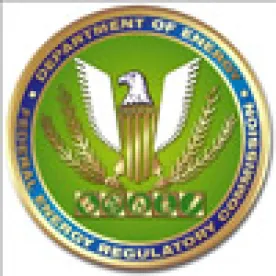Report adds transparency on surveillance activities and confirms that despite the lack of quorum for much of FY 2017, FERC enforcement activity continued prior trends.
On November 16, the Federal Energy Regulatory Commission (FERC or the Commission) Office of Enforcement (OE) issued its 2017 Report on Enforcement. The report provides a review of OE’s activities during fiscal year 2017 (FY 2017), which begins October 1 and ends September 30 annually, revealing likely areas of focus for FERC enforcement in the coming year, and providing guidance to the industry based on the wide variety of enforcement matters that are otherwise non-public and synthesizing for the benefit of the industry some of the more disparate developments from audits, market surveillance, and other enforcement activities.
The report indicates OE’s continued focus on the same areas of market and operational risk that have traditionally captured its attention, particularly conduct that undermines regulated energy markets and poses a significant threat to the reliability of the bulk-power system. Despite the lack of a quorum at FERC for much of FY 2017, OE activities largely continued in the same manner as the previous year. Going forward, OE does not anticipate that its priorities will change for FY 2018. As explained in the accompanying press release, “Conduct involving fraud and market manipulation poses a significant threat to the wholesale energy markets because it undermines FERC’s goal of ensuring efficient energy services at reasonable cost, and it erodes confidence in those markets to the detriment of consumers and competitors.”
Court litigation has become a larger part of FERC’s enforcement activity. Subjects of enforcement actions are choosing to contest FERC’s findings in courts rather than through FERC’s in-house administrative proceedings, and FERC’s report describes its continued litigation of contested cases in federal courts. One of the longstanding court cases was settled shortly after the beginning of FY 2018, but FERC’s report covers the other pending cases. Although no court cases have resulted in a final adjudicated decision, the report explains how the courts have sided with the entities challenging FERC’s view that courts should only review FERC’s existing enforcement findings and not hold a full de novo review with discovery. None of the court cases, to date, has sided with FERC on this issue.
The report, as in previous years, indicates that the vast majority of alleged violations are addressed informally without findings or through corrective actions voluntarily implemented by the subject of the investigation, without the need for a formal settlement. This year, OE also expands its description of the surveillance inquiries initiated by its Division of Analytics and Surveillance that are closed without referral for enforcement.
Division of Investigations Overview
According to the report, OE’s priorities were the same as in previous years and largely focused on four primary areas:
-
Fraud and market manipulation
-
Anticompetitive conduct
-
Conduct that threatens transparency in regulated markets
-
Serious violations of mandatory reliability standards
The report describes this as showing OE’s intent to “continue to support the Commission’s core functions of ensuring just and reasonable rates, and promoting secure and sustainable energy infrastructure.”
The report shows that the Division of Investigations opened 27 new investigations in FY 2017 and closed 16 pending investigations with either no action or through a Commission-approved settlement. The division also received about 182 hotline inquiries requesting FERC review of alleged violations. OE received 80 self-reports from regulated entities and took adverse action only in a minority of those cases, finding that most self-reporting entities had identified and implemented self-corrective actions and had caused little or no market harm.
Although FERC collected more than $51 million in civil penalties through settlements and more than $42 million in unjust profits (with millions more potentially to be collected through pending investigations and court hearings), FERC’s continued willingness to permit entities to identify, report, and correct most violations provides a concrete demonstration of the benefits companies can derive from having strong compliance programs.
Division of Audits and Accounting Overview
From an audits perspective, the report notes that the Division of Audits and Accounting conducted 11 audits of oil pipeline, public utility, and natural gas companies during FY 2017. These efforts reflected a slight decrease from the division’s 2016 activities but led to more than 300 corrective action recommendations and to the issuance of more than $13 million in refunds. Under its audit authority, OE conducts both financial (rate) audits and performance (nonrate) audits, and these often extend for more than a year. As a result, OE’s reported 2016 and 2017 numbers may not fully reveal the occasional intensity of the audit process, and the conclusion of 11 audits in a calendar year might mask the fact that many more audits may be in progress at any given moment.
The report provides detailed summaries of the following issues where the Division of Audits and Accounting has found that entities frequently have compliance challenges, providing a consolidated view of the findings otherwise spread through disparate reports issued sporadically throughout the year:
-
Failures to comply with FERC’s accounting and financial reporting regulations, resulting in incorrect formula rate calculations for electric transmission companies and natural gas pipelines
-
Noncompliance with open access transmission tariff regulations, including use of network service and network resources
-
Companies using the consolidation method of accounting for subsidiaries rather than the required equity method
-
Failures to file required reports with full information for nuclear decommissioning trust funds
-
Errors in the calculation of Allowance for Funds Used During Construction
-
Accounting errors that impact the accuracy of amounts reported by oil pipelines on page 700 of their FERC Form No. 6, Annual Cost of Service-Based Analysis Schedule, which is sometimes used by FERC and interested parties to evaluate interstate oil pipeline rates.
Division of Analytics and Surveillance
The report also states that the Division of Analytics and Surveillance, which was established in 2012, worked on about 50 investigations in 2017. According to the report, this unit “develops surveillance tools, conducts surveillance, and analyzes transactional and market data to detect potential manipulation, anticompetitive behavior, and other anomalous activities in the energy markets.” This year, OE provided illustrative examples of DAS inquiries that were closed with no referral for enforcement action. Such examples included (i) surveillance screens of a natural gas market participant buying gas “at elevated prices and with a high market concentration during bidweek,” (ii) surveillance screens of a natural gas market participant “in the cash market trading early, buying at elevated levels, and engaging in concentrated trading,” and (iii) electric market surveillance screens which identified “elevated, early session sales placed by a market participant in fixed-price next-day contracts at a bilateral hub.” These inquiries and more are described in further detail within the 2017 Enforcement Report.





 />i
/>i

